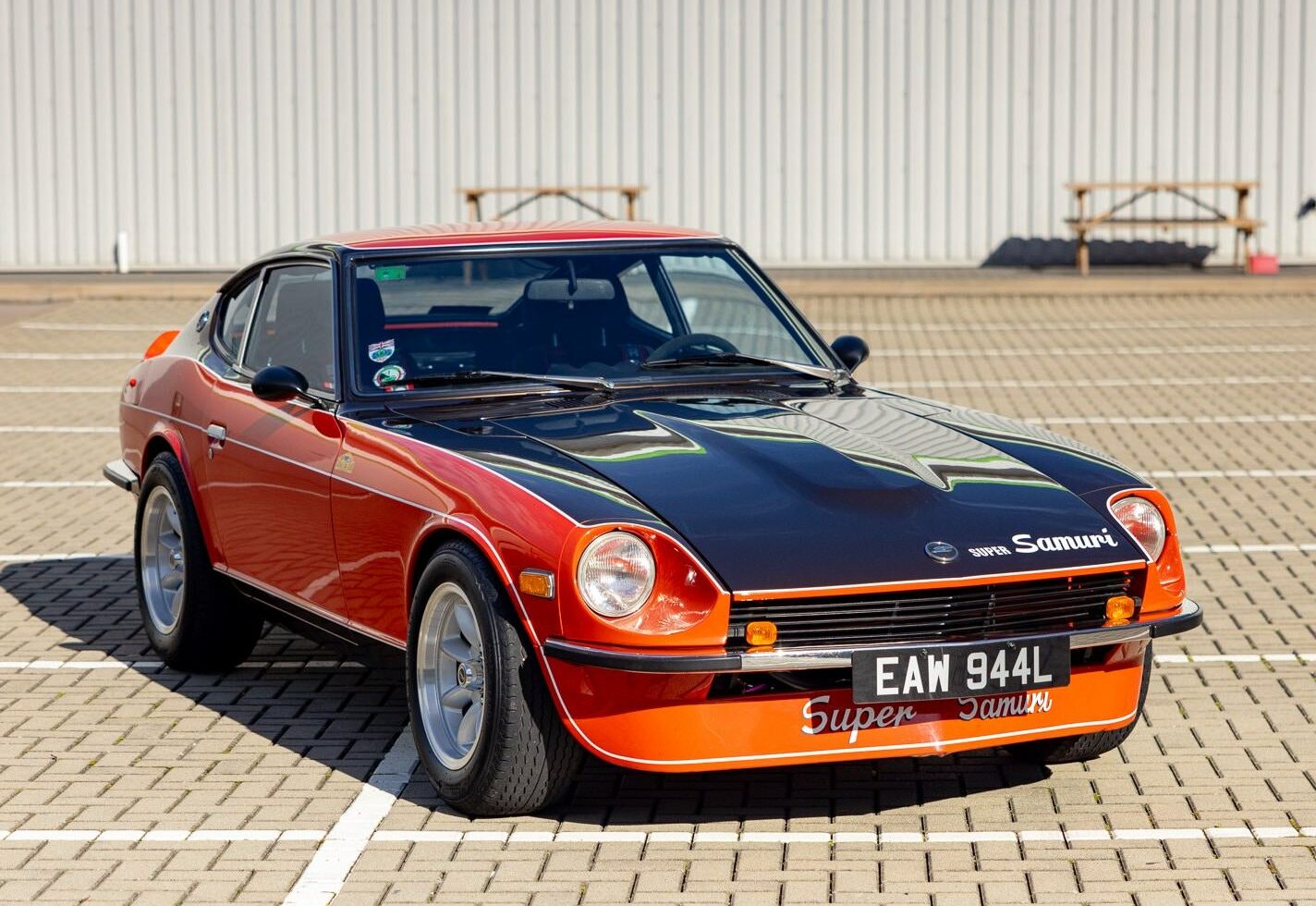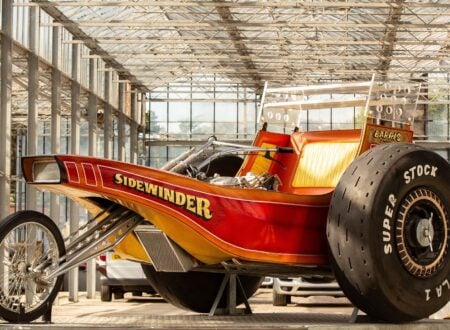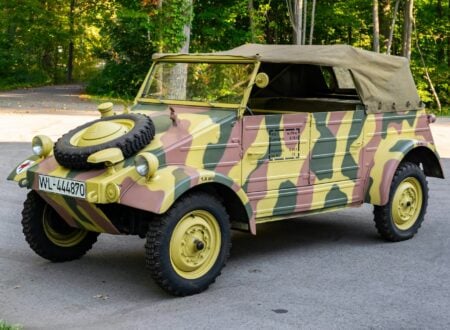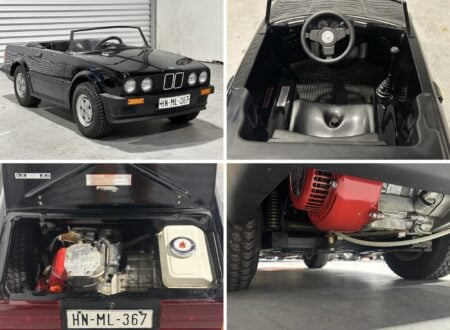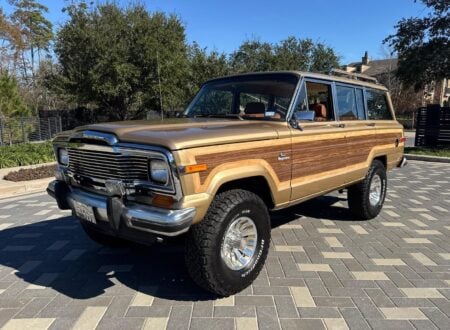This is a Datsun 240Z “Super Samuri” and if you’ve never heard of the model before that may be because just 77 were ever made, all in Britain, and just 40 or so are thought to have survived.
Each of the Datsun 240Z Super Samuris were built by Spike Anderson, a sort of British equivalent to Carroll Shelby, who took stock Datsun Z cars and modified them extensively – turning them into race and championship winning vehicles in the process.
The Datsun 240Z “Super Samuri”
- Spike Anderson founded his company Race Head Services in the early 1970s after leaving famed British tuning company Broadspeed, where he had been an engine modification and tuning specialist.
- The name “Super Samuri” was chosen by Anderson for his new creations as the name “Samurai” had already been trademarked in the United Kingdom.
- Over the years Anderson would built 77 Datsun 240Z Super Samuris, as well as a number of other modified vehicles including a Toyota Celica ST, a Datsun 1200 Sunny coupe, a Datsun 1800 SSS Bluebird, and even a little Datsun 120A.
- The car you see here was built for famous British racing driver Winston “Win” Percy who had been a racing driver for Anderson often piloting track prepared Super Samuris.
Spike Anderson And A Fateful Decision
Spike Anderson spent years working for the highly-respected performance company Broadspeed in Britain, he earned a reputation as an engine specialist and was particularly adept at porting and polishing heads to squeeze more power from an engine.
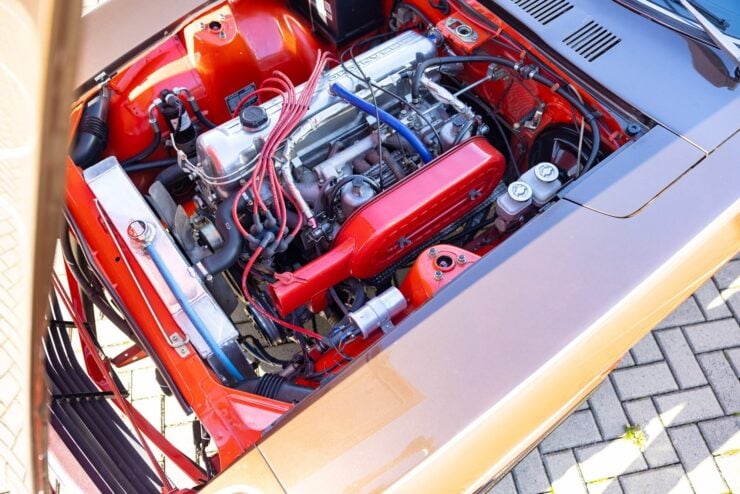

In the early 1970s he left Broadspeed and set up shop on his own under the company name Race Head Services. Business was brisk and thing were going well when, in the early 1970s, he made the fateful decision to buy himself a Datsun 240Z.
He can’t have known it at the time, but this would be a turning point in his life, and it would result in him becoming a race and championship winning vehicle builder, a successful racing driver in his own right, and the creator of the “Super Samuri” – arguably the most famous aftermarket tuned Datsun Z cars in the world.
The Super Samuri
The first Super Samuri ever built belonged to Anderson himself, in fact he never originally intended to build a series of them but after his personal car was spotted by Clive Richardson of Motor Sport magazine a series of two glowing articles were written about it, his phone started to ring.
Enquiries poured in from people who wanted their own Super Samuri 240Z, and Anderson quickly realized he was onto something. He began building customer Super Samuris all in the same style as his own personal car.
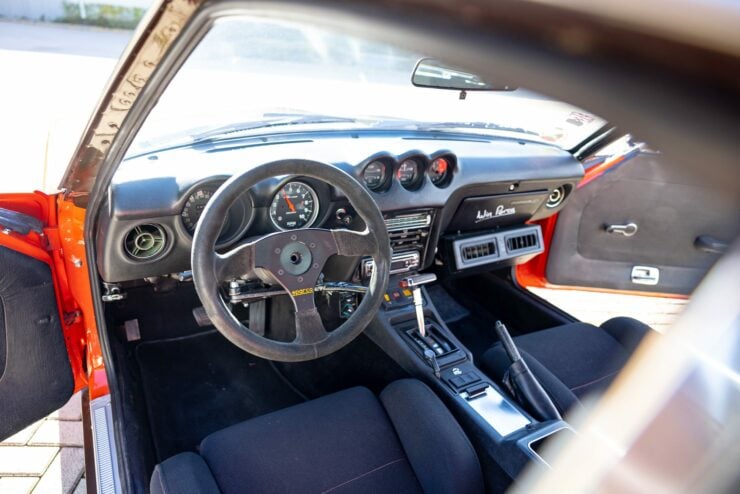

Super Samuris are immediately recognizable thanks to their two-tone bright orange and black paintwork, white pinstripes, prominent chin spoilers, and a slew of performance enhancements that typically boosted power output from 151 bhp to 190 bhp.
Thanks to their combination of good looks and excellent performance he would eventually sell a total of 77 Super Samuris, so named because the name “Samurai” (with the standard spelling) had already been trademarked.
Anderson’s Samuris would win a slew of races and championships in the UK both in the 1970s and beyond in vintage racing competition often with Winston “Win” Percy at the wheel. Unfortunately it’s believed that only approximately 40 original cars have survived to the current day.
The 1972 Datsun 240Z Super Samuri Shown Here
The car you see here is perhaps a little more special than most Samuris as it was personally built for Winston “Win” Percy by Spike Anderson, possibly as a thank you for the on track exploits of Percy in the race-spec Samuris.
This car is powered by a 2.8 liter OHC Datsun straight-six sending power back through an upgraded four-speed automatic transmission and an R200 limited-slip differential. It rides on period correct Minilite wheels with Avon Radial tires, and it has competition brakes all round with a brake balance lever on the steering column.
It’s now being offered for sale on Collecting Cars out of the West Midlands in England, if you’d like to read more about it or register to bid you can visit the listing here.
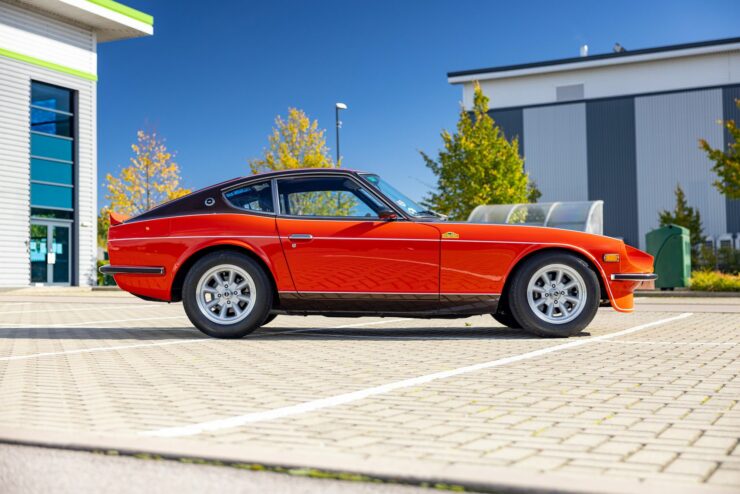
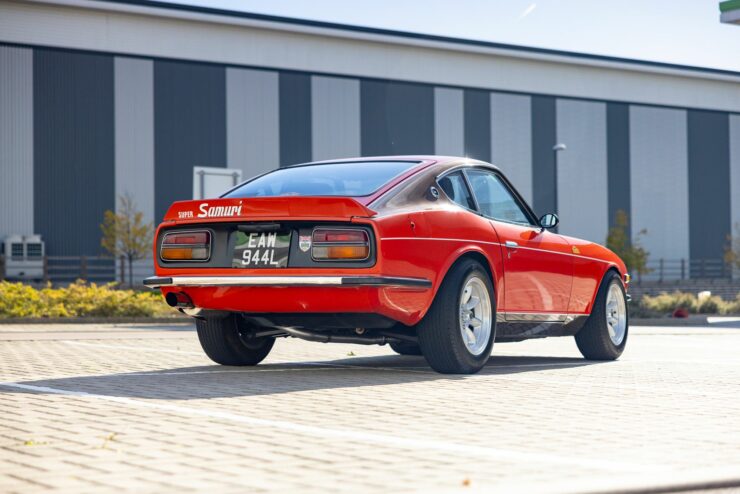
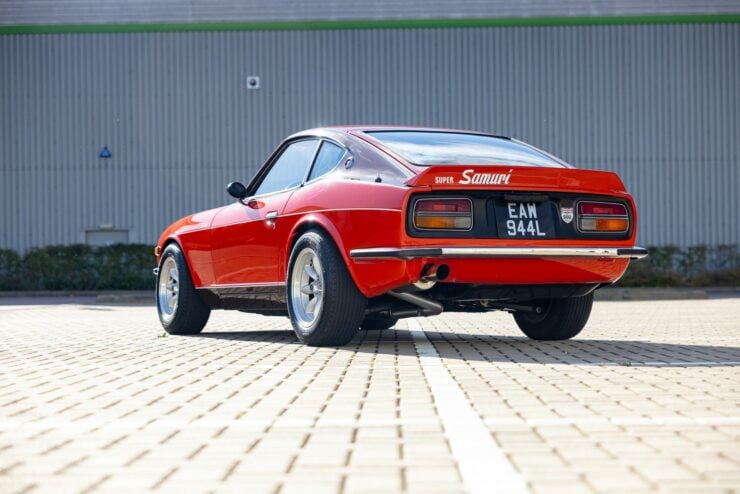
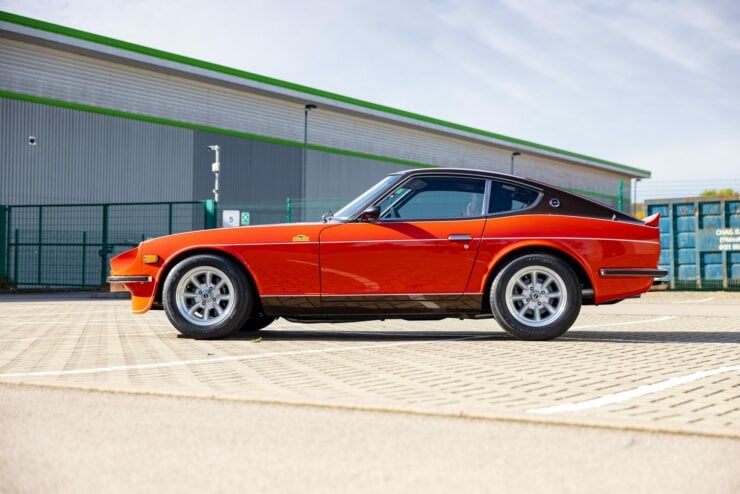
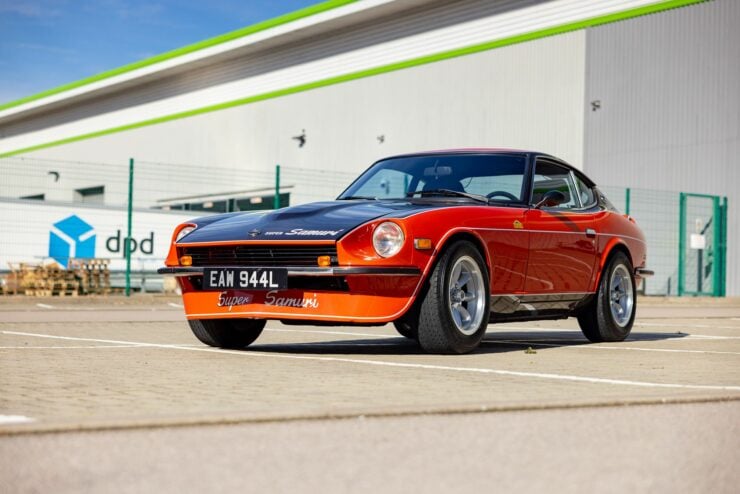
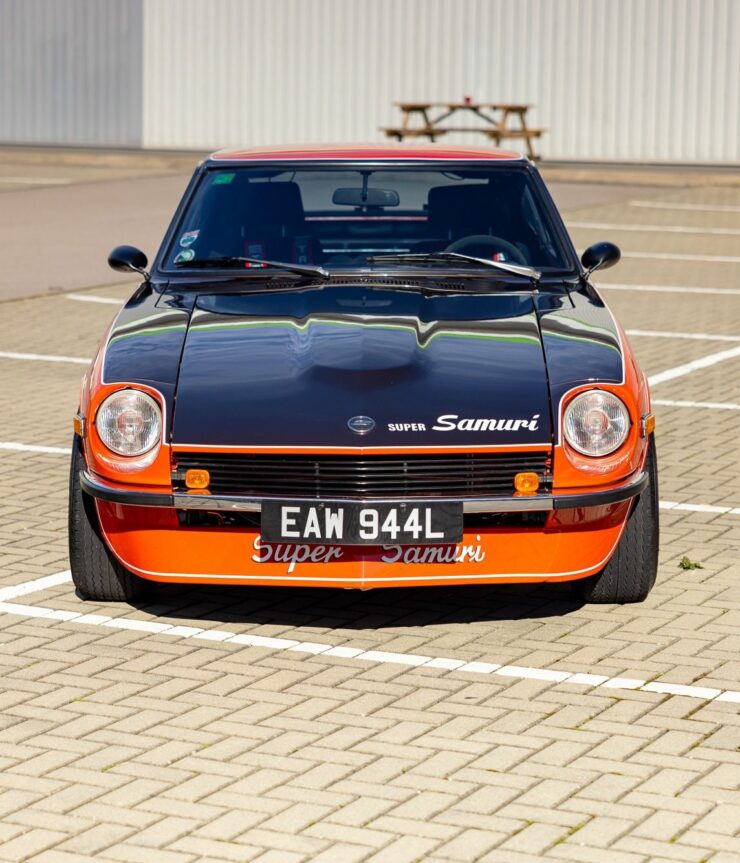
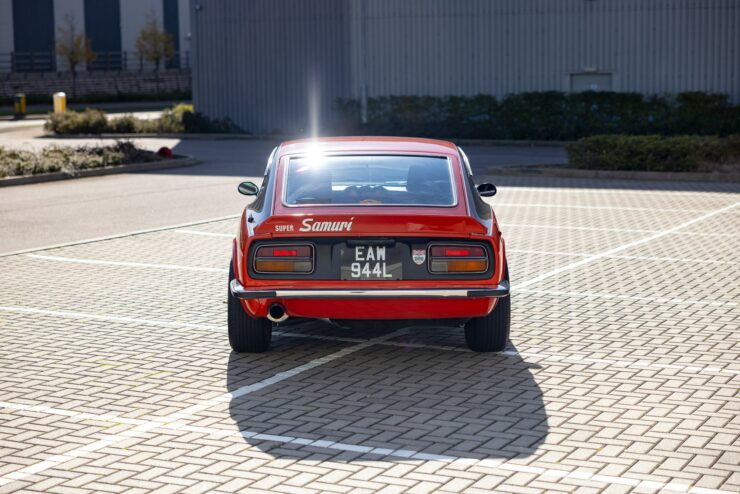
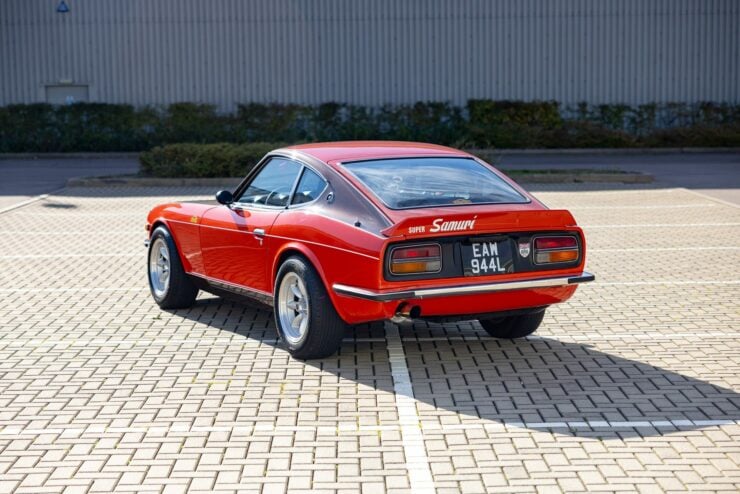
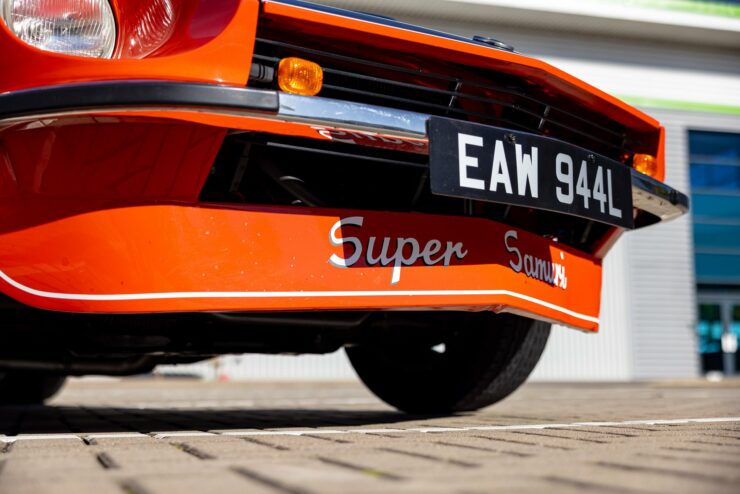
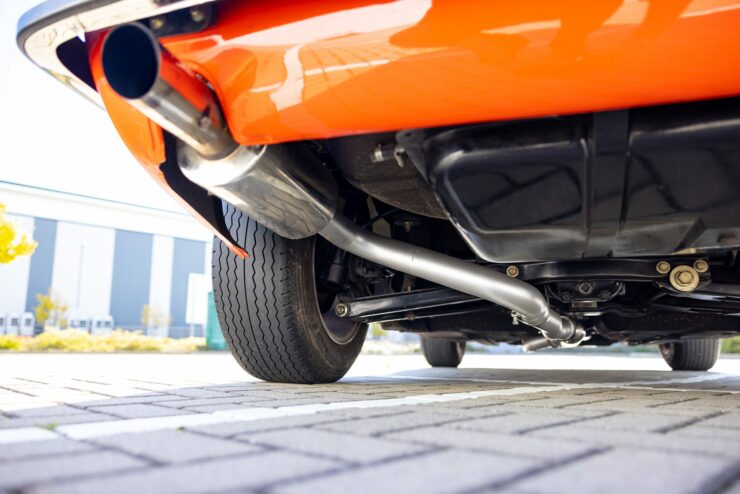
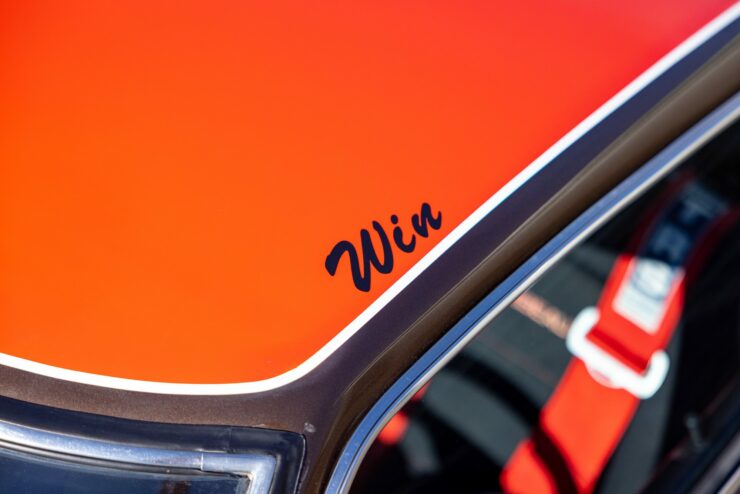
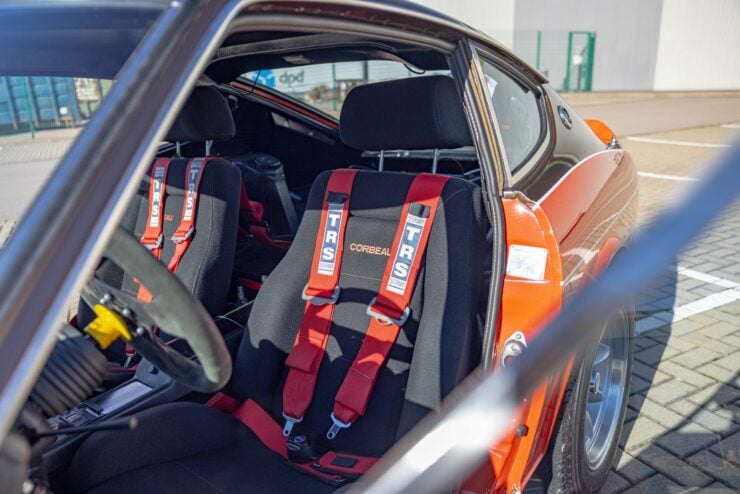
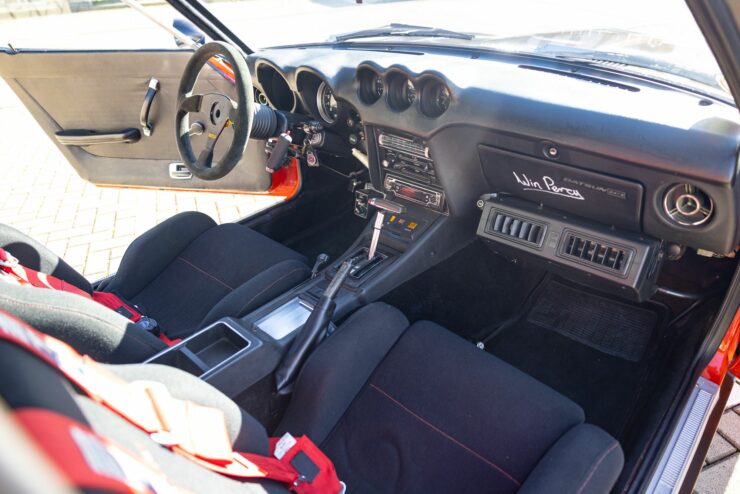
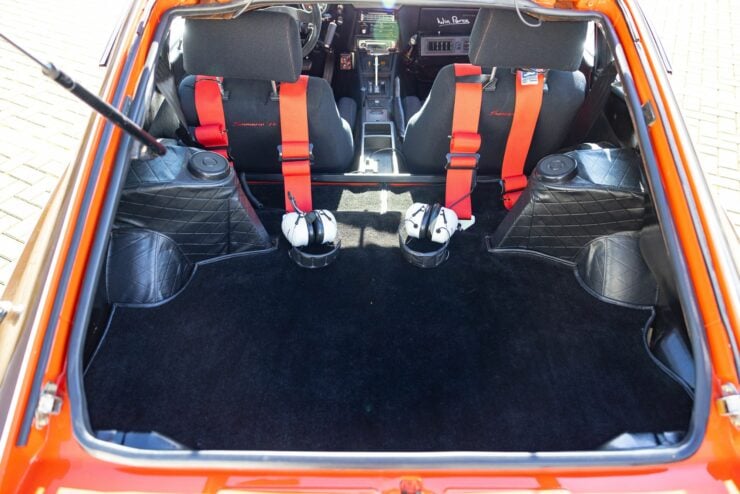
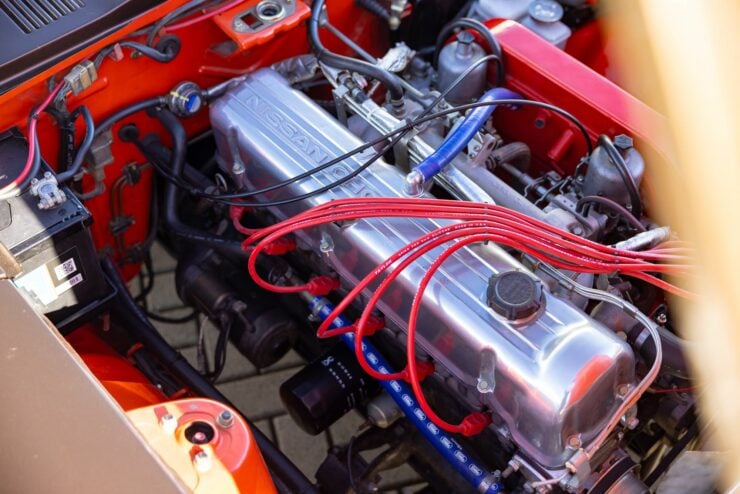
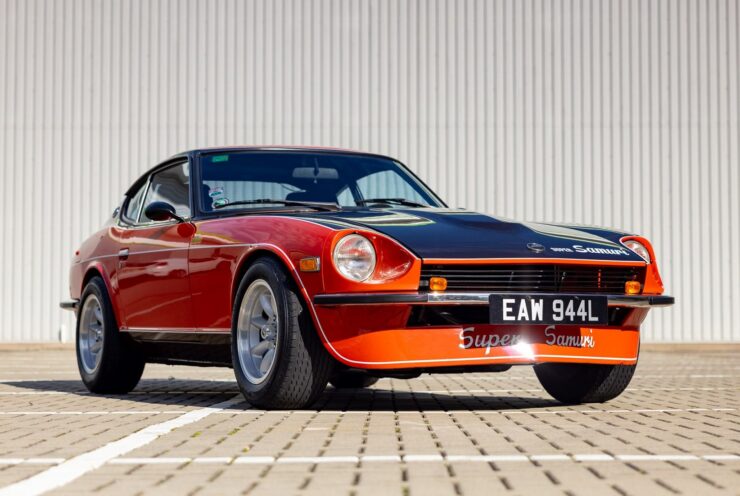
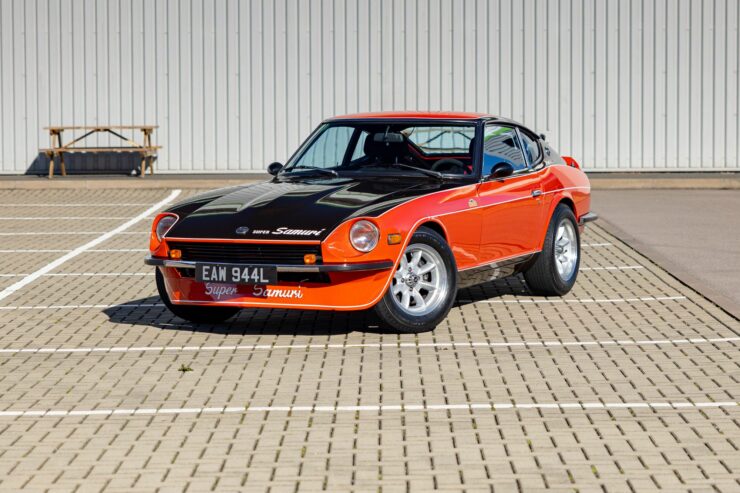

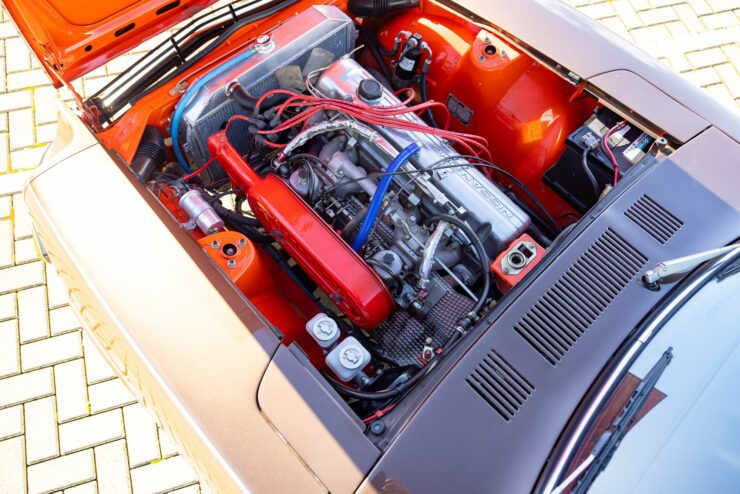
Images courtesy of Collecting Cars

